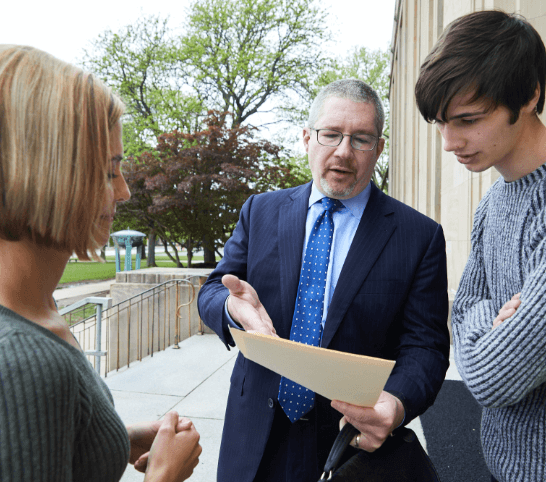I get the Facts from You
When you call me, I’ll start by asking you what you know. For example, do you know why the police are looking for you? And if so, when did the incident happen?
I’ll also ask for a bit of background information about you – your age, where you live, your job, etc.
At that point I’ll be able to give you a brief assessment of the situation from a legal point of view, as well as my advice on what to do, moving forward.
You Hire Me
If you’re confident in my ability to help you, you’ll then “retain” me.
“Retaining” essentially means paying a fee to secure my services in representing you.
It’s a flat fee, and the precise amount depends on the nature of the case.
I’ll be able to tell you the fee during our first call.
I Talk to the Detective
’ll call the detective who left you his card, or I’ll call the local precinct if the incident just happened.
I’ll find out what they think happened, why they’re looking for you, and anything else I possibly can.
If the police are looking to arrest you I’ll talk to the detective and set a time that’s mutually agreeable for you to appear at the precinct (this is called the “surrender”).
It always makes more sense that we go to the precinct rather than deal with the unknown of when the police may come to arrest you – and the embarrassment of being arrested at home in front of your family – or at work in front of your co-workers.
I’ll then call you and explain everything I know about the situation, and what your next steps will be.

We Attend the “Surrender” (Go to the Precinct for the Arrest)
Beforehand, I’ll explain the following:
• What you should bring with you
• What happens when the detective processes you (photos, mugshots, paperwork, etc.)
• How long you’ll have to wait until the arrangement (the initial court case)
• What our plan of action will be at the arraignment
• Where you’ll be held until the arraignment
• How you can get in touch with me if you need me
We Attend the Arraignment (the Initial Court Case) Together
A number of topics are discussed during the arraignment, but the main purpose is to decide your custody status.
A determination will be made as to whether you will be released on your own recognizance or if the judge will set bail to insure you return to court.
When I make my argument to the judge to ask for you to be released or for low bail to be set, I will discuss the fact that you have strong family/business ties and are therefore unlikely to willfully ignore the court’s order that you appear on each court date.
Or I might point out that you haven’t been arrested before, or that the case is a weak one, or that the financial or physical harm wasn’t as great as the prosecutors are making out. Anything that supports our position, I’ll use it.
The judge will decide whether to release you on your own recognizance, hold you with no bail or set a cash bail and a bond alternative.
If the judge sets bail, I’ll walk you through the procedure of getting it paid either through the court or through a bail bondsman.
It is possible that when a judge agrees to release you, she will do so only if you meet certain conditions.
One condition might be that you’re sent for “evaluation” – e.g. for substances, anger management, or mental health issues.
Most courts have an agency that will do the evaluation, but I send all my clients to my own people.
The court might also want to issue an “order of protection” that will keep you away from the person making the complaint.
This can have serious implications – e.g. some people can’t go back to their homes or see their kids – so I’ll do whatever I can to convince the court not to issue it if I think it’s unreasonable.
I’ll always try my best to make sure the arraignment takes place as soon as possible after your surrender, so that you spend as little time as possible in custody.
Next Steps
Now that the arraignment is over, the next step will be for you to come into the office so that I can explain how the next stage of the process works – and how I can help defend you.
To learn more about the procedure and strategy for your defense case, [click here].
